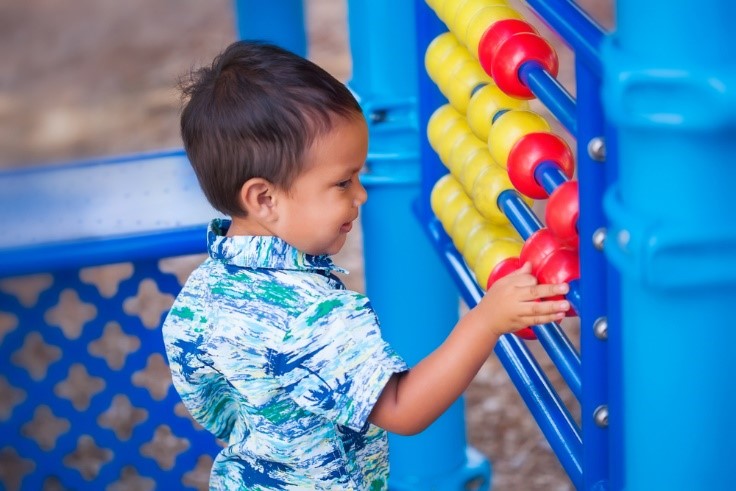Use fun activities to help the children in your care understand numbers
Young children learn best through casual play, so adding math-related activities that are easy and fun will allow them to develop their skills. Once a child has a basic understanding of numbers that knowledge can be expanded through more formal educational endeavors.
Introduce basic math skills and numbers to the young children in your care by finding fun ways to add the following concepts, ideas, and activities into your daily plan.
Building blocks of math
Math is a big part of our everyday life. Adults think of math as a structured subject that includes addition, subtraction, multiplication, division, and more. However, simple tasks like counting stairs as you climb them or playing with a shape-sorting toy are important steps to develop a more advanced view of mathematical concepts.
Structure math-friendly activities around these concepts to give the children in your care a head start when it comes to understanding numbers.
Play with shapes
It’s important for young children to develop familiarity with shapes. Identifying and talking about shapes is a great beginning math lesson, too. Cut shapes of different sizes and colors out of construction paper or poster board and create games that use the cutouts, such as asking the children to hold up the shape that you call out or to sit down on the red square, blue circle, etc.
You can also use shapes in art projects, have children find them in a picture of a book you’re reading, or point them out in your environment, such as asking what shape a street sign is on your walk.
Count and sort
Provide children with a bin of age-appropriate pom-poms or buttons and a muffin tin where each circle is numbered. Encourage children to sort the items into the numbered section; for instance, place four pom-poms in the section with the number four.
You can also provide a small mix of items, such as buttons, shells, or beads and ask the children to sort each object type into its own category and count how many of each item there is.
Bigger or smaller
Recognizing a difference in size is measuring in its most basic form. Help children practice identifying which item is bigger or smaller. For example, which is bigger – a cat or a horse? Use flashcards or book illustrations to get the conversation started.
You can also provide different lengths of yarn or ribbon and ask the children to sort the pieces from the shortest to the longest.
Make patterns
Explore making patterns through different art projects and materials. Provide chunky beads, construction paper shapes, stickers, or stamps and encourage children to make patterns that vary in color or shape.
Give them some general guidance, like alternating red and blue colors or big and small items or circles and squares and let them practice making their own patterns out of the materials available.
Number recognition
Being able to recognize numerals and the value each represents is a core part of math skills. Create games and activities that help children match a number to the quantity. For instance, create two piles of Lego or Duplo blocks. One pile should have stickers with numerals and the other should have dots that correspond with the numerals. Encourage the children to pick a numbered block and connect it with the block with the same number of dots: the block numbered three should connect with the block with three dots.
Also, work on making numbers using finger paints. Allowing children to work with their hands combines motor skills and number recognition to help with two important skills.
Math is an important ingredient in academic success. Help children learn about numbers, shapes, sizes, and patterns by encouraging easy activities that seem more like play to help them develop a true understanding of how math plays a role in our everyday lives.
The Virginia Infant & Toddler Specialist Network helps improve the quality of care for infants and toddlers through extensive resources, services, and education for caregivers. Learn more about how we can help you improve the standard of care.




